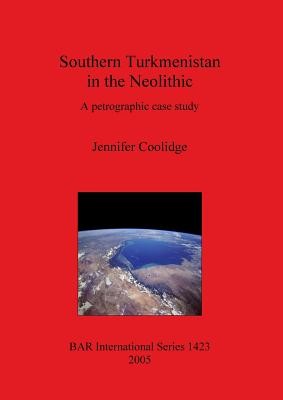
- We will send in 10–14 business days.
- Author: Jennifer Coolidge
- Publisher: British Archaeological Reports Oxford Ltd
- ISBN-10: 1841718629
- ISBN-13: 9781841718620
- Format: 21 x 29.7 x 1.4 cm, softcover
- Language: English
- SAVE -10% with code: EXTRA
Reviews
Description
The Neolithic period of southern Turkmenistan, Central Asia is the primary focus of this study. During the Neolithic, southern Turkmenia was inhabited by two main groups living in two discrete ecological environmental zones: the Jeitun Culture of the southern super-zone and the Keltiminar Culture of the northern super-zone. The Jeitun peoples practised an agro-pastoral settled (or semi-settled) lifestyle in the upland intermontane valleys, the fertile piedmont zone, and the alluvial floodplain of the Kopet Dag mountains. The Keltiminar peoples practised a mobile hunting, gathering, fishing, and stockbreeding seasonal-round subsistence system while inhabiting the semi-desert, desert, and deltaic areas of the Kara and Kyzyl Kum deserts, and the lower Amu Darya and Zeravshan rivers. In this study, Chapters 1-3 provide the background critical to an accurate understanding of the typological and petrographic case studies, the insight those studies can provide to our knowledge of the structure of the Jeitun and Keltiminar Neolithic adaptations, and the notion of prehistoric Turkmenia as an archaeological border zone. The ceramic assemblages for the petrographic case study are initially introduced in the context of ceramic typology (Chapter 4), and subsequently in terms of general petrography (Chapter 5) and the Kopet Dag case study (Chapter 6). Finally, Chapter 7 represents a synthesis and interpretation of the data and results from Chapters 4 and 6. This synthesis and interpretation serves as a precursor to a final discussion of contrasts, comparisons, and possibilities for future research in the region (Chapter 8).
EXTRA 10 % discount with code: EXTRA
The promotion ends in 20d.20:44:32
The discount code is valid when purchasing from 10 €. Discounts do not stack.
- Author: Jennifer Coolidge
- Publisher: British Archaeological Reports Oxford Ltd
- ISBN-10: 1841718629
- ISBN-13: 9781841718620
- Format: 21 x 29.7 x 1.4 cm, softcover
- Language: English English
The Neolithic period of southern Turkmenistan, Central Asia is the primary focus of this study. During the Neolithic, southern Turkmenia was inhabited by two main groups living in two discrete ecological environmental zones: the Jeitun Culture of the southern super-zone and the Keltiminar Culture of the northern super-zone. The Jeitun peoples practised an agro-pastoral settled (or semi-settled) lifestyle in the upland intermontane valleys, the fertile piedmont zone, and the alluvial floodplain of the Kopet Dag mountains. The Keltiminar peoples practised a mobile hunting, gathering, fishing, and stockbreeding seasonal-round subsistence system while inhabiting the semi-desert, desert, and deltaic areas of the Kara and Kyzyl Kum deserts, and the lower Amu Darya and Zeravshan rivers. In this study, Chapters 1-3 provide the background critical to an accurate understanding of the typological and petrographic case studies, the insight those studies can provide to our knowledge of the structure of the Jeitun and Keltiminar Neolithic adaptations, and the notion of prehistoric Turkmenia as an archaeological border zone. The ceramic assemblages for the petrographic case study are initially introduced in the context of ceramic typology (Chapter 4), and subsequently in terms of general petrography (Chapter 5) and the Kopet Dag case study (Chapter 6). Finally, Chapter 7 represents a synthesis and interpretation of the data and results from Chapters 4 and 6. This synthesis and interpretation serves as a precursor to a final discussion of contrasts, comparisons, and possibilities for future research in the region (Chapter 8).


Reviews